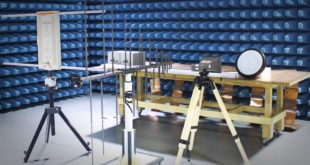Semiconductors are materials that have a conductivity between conductors and insulators. They can be pure elements, silicon or germanium or compounds; gallium, arsenide or cadmium selenide. Semiconductor Chips are the basic building blocks that serve as the heart and brain of all modern electronics and information and communications technology products. …
Read More »Laser 3D scanning for fast prototyping of Military systems, reverse engineering, virtual reality, maintenance support and quality control
3D laser scanning is a way to capture a physical object’s exact size and shape into the computer world as a digital 3-dimensional representation. 3D Laser Scanning is a non-contact, non-destructive technology that digitally captures the shape and structure of physical objects in a faster and more accurate way using …
Read More »Wireless and Satellite Network testing tools QXDM, Speedtest, xcal/qualipoc, drive-test tools
5G will enable a new set of services, not only for human users but also for industrial and automotive purposes. Key factors for acceptance and use are ultra-high reliability and real-time interaction capability. For those future applications, it is key to measure and rate the interactivity of a network and …
Read More »Digital Camera design and manufacturing
A digital camera is a camera that captures photographs in digital memory. Most cameras produced today are digital, largely replacing those that capture images on photographic film. Digital and digital movie cameras share an optical system, typically using a lens with a variable diaphragm to focus light onto an …
Read More »Safe destruction and recycling of ballistic and non-ballistic materials
When body armor and bulletproof vests reach the end of their service life, law enforcement and military organizations must dispose of ballistic materials in accordance with National Institute of Justice (NIJ) regulations. The National Institute of Justice (NIJ) has provided a publication, Guide to Body Armor, which lays out standards …
Read More »Spacecraft Interface Control Document (ICD)
The definition, management, and control of interfaces are crucial to successful programs or projects. Interface management is a process to assist in controlling product development when efforts are divided among parties (e.g., Government, contractors, geographically diverse technical teams, etc.) and/or to define and maintain compliance among the products that should …
Read More »Spacecraft Mechanical Sub-system Design & Manufacturing
Mechanical engineering is an engineering branch that combines engineering physics and mathematics principles with materials science, to design, analyze, manufacture, and maintain mechanical systems It is one of the oldest and broadest of the engineering branches. “Mechanical Engineering takes in all built structures and moving parts flown in space, …
Read More »Matlab and Simulink
Modeling is the process of representing a model (e.g., physical, mathematical, or logical representation of a system, entity, phenomenon, or process) which includes its construction and working. This model is similar to a real system, which helps the analyst predict the effect of changes to the system. Simulation of a …
Read More »Defense and Aerospace software Verification and Validation
Late delivery or software defects can damage a brand’s reputation — leading to frustrated and lost customers. In extreme cases, a bug or defect can degrade interconnected systems or cause serious malfunctions. Consider Nissan having to recall over 1 million cars due to a software defect in the airbag sensor detectors. …
Read More »MIL-STD 461 EMI/EMC standards ensure safety and mission success of Military, Aeropace and Space vehicles
Modern computers operate in a “noisy” electronic environment. They are surrounded by powerful electromagnetic interference (EMI) generated by radios, radar, microwave transmitters, other computers, and a wide assortment of electronic equipment. Electromagnetic Interference (EMI) is electromagnetic energy that disturbs, interrupts, obscures or degrades the effective performance of the electrical equipment. Electromagnetic …
Read More » International Defense Security & Technology Your trusted Source for News, Research and Analysis
International Defense Security & Technology Your trusted Source for News, Research and Analysis

